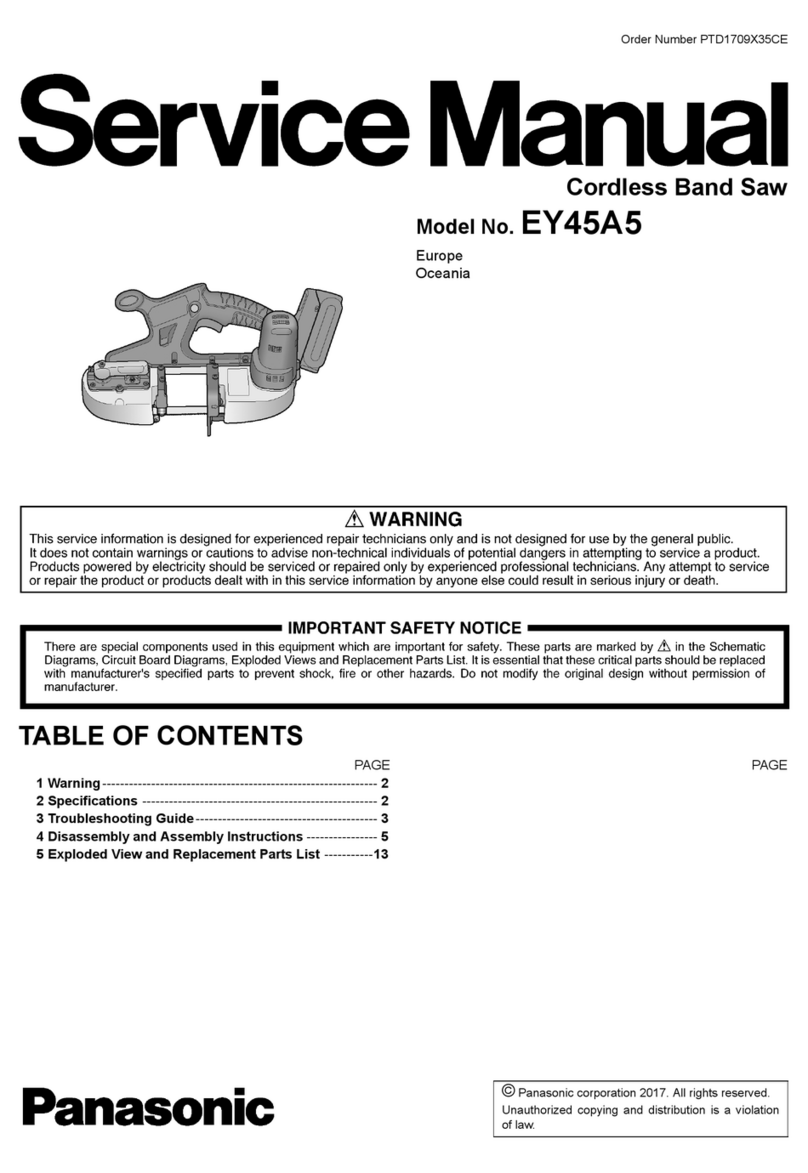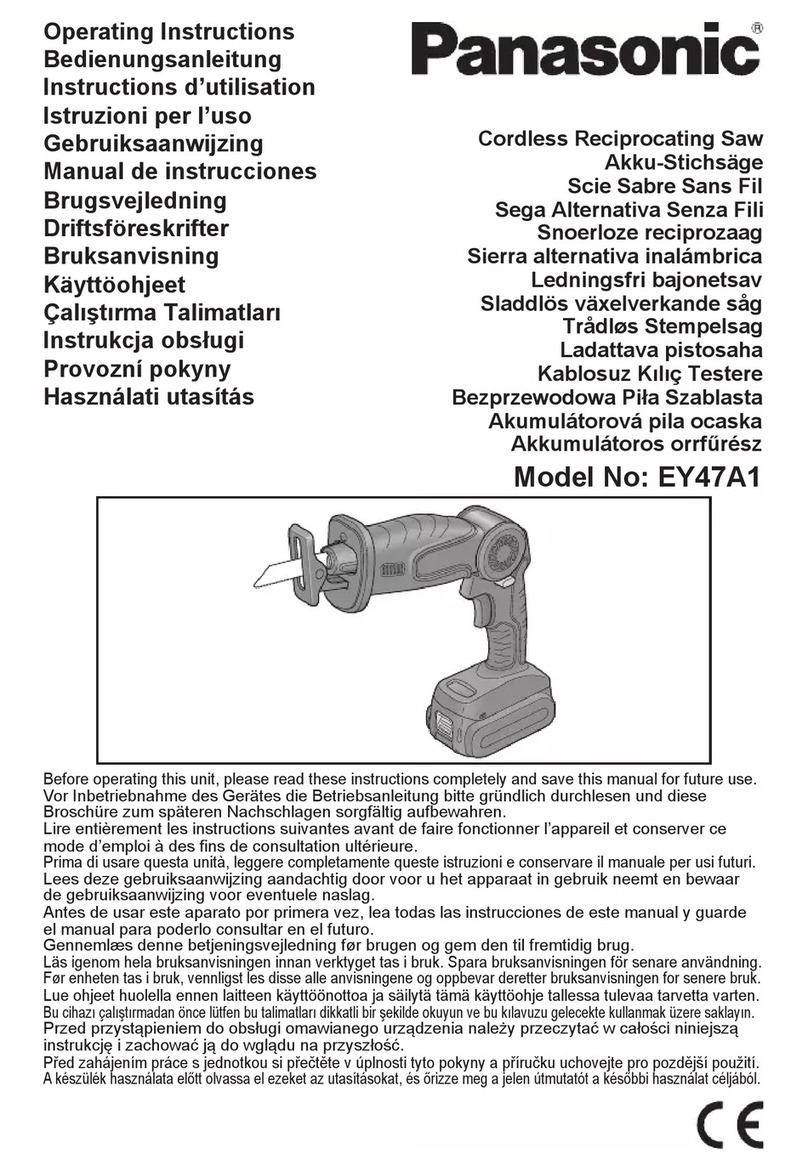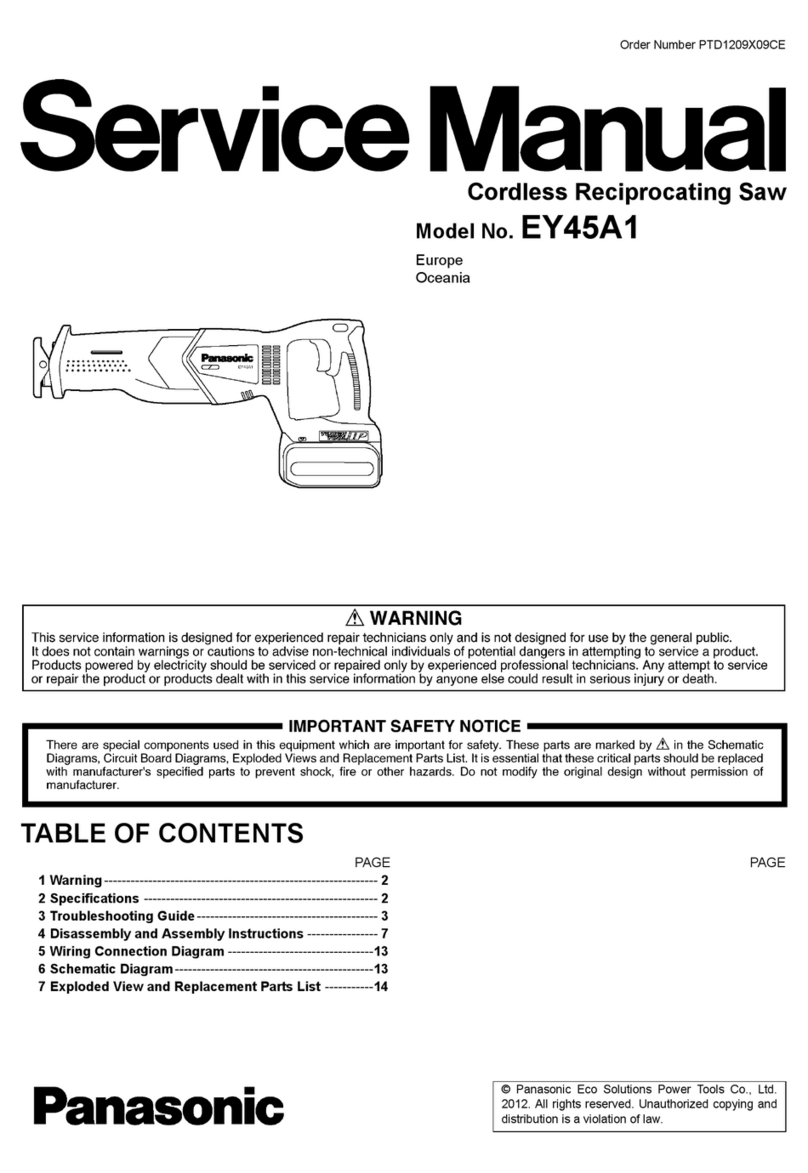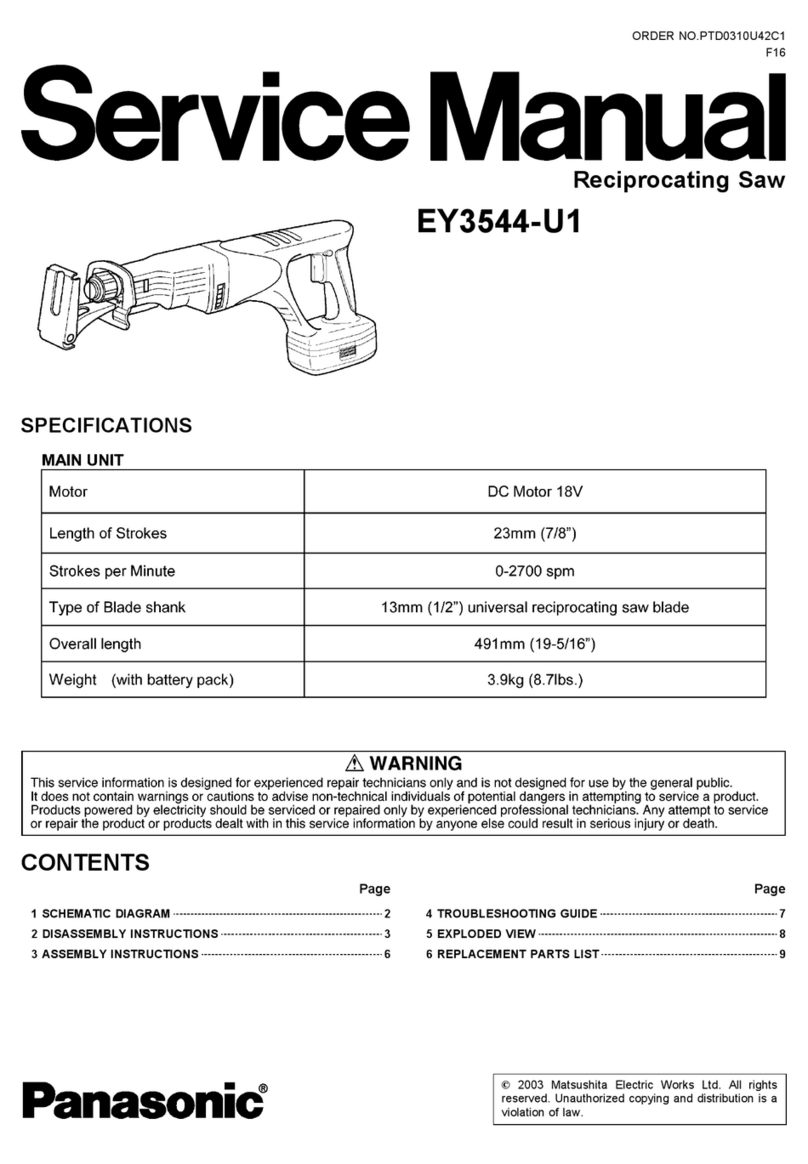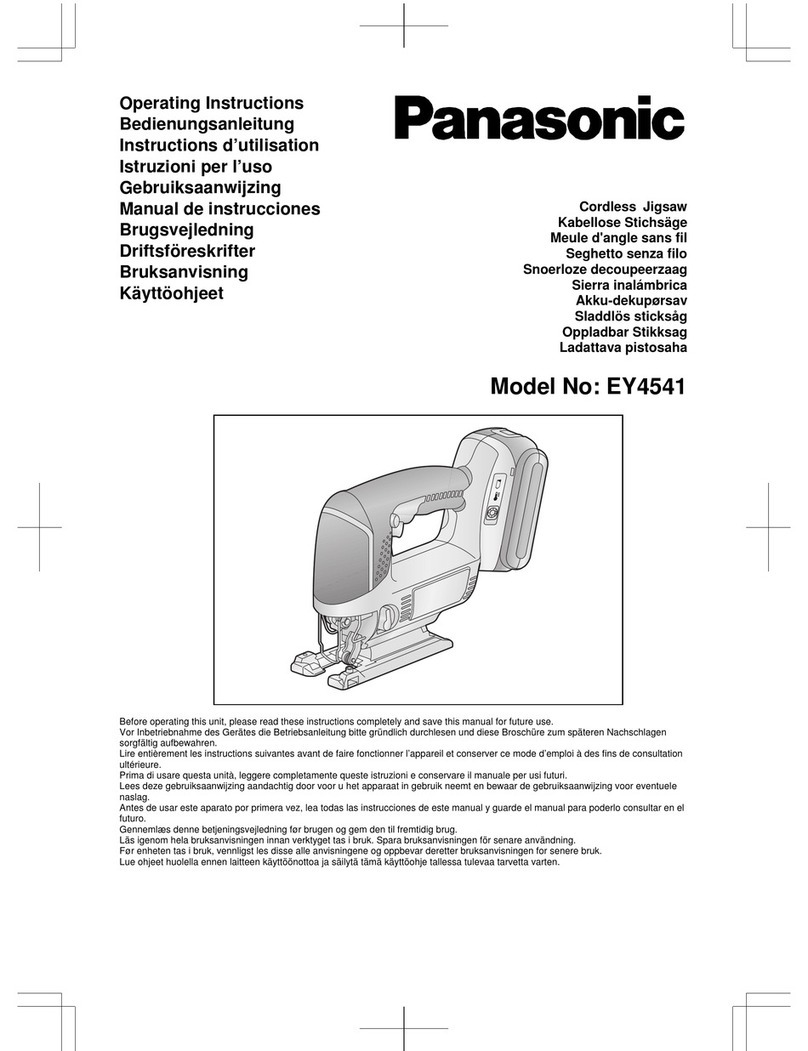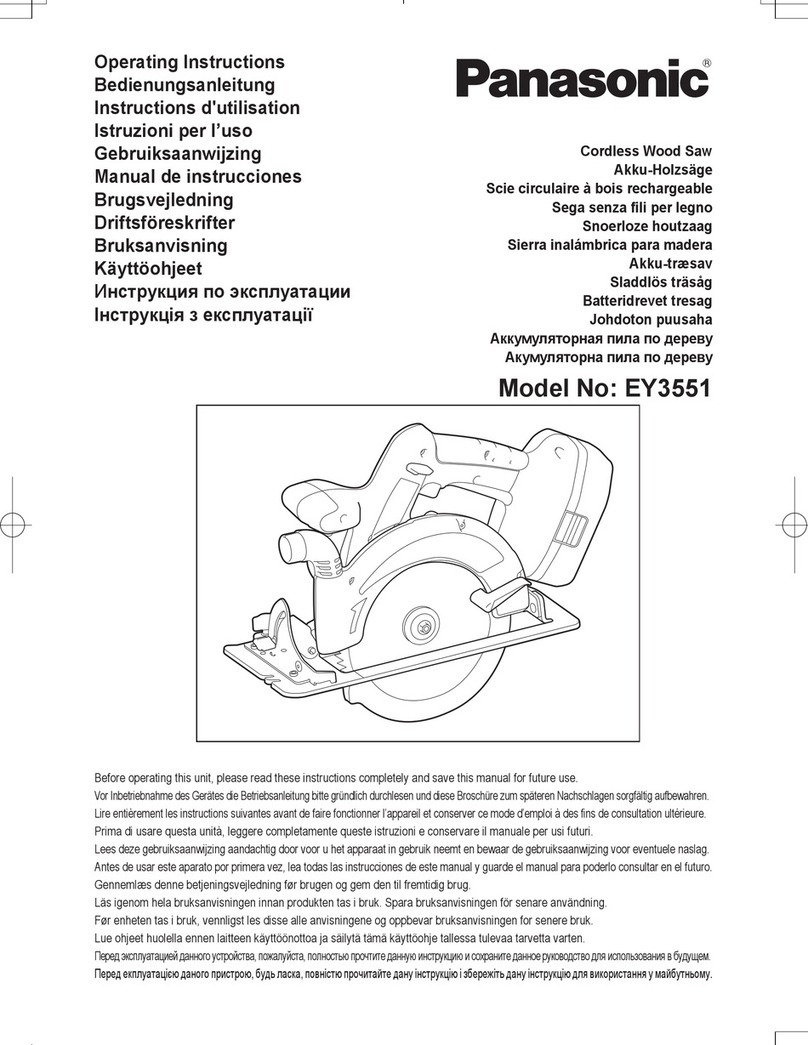
- 4 -
(G)
Vent
Entlüftung
Apertura
Ventilatiegat
Ventilación
Ventilation
Ventil
Ventilasjonshull
Aukko
Otwory wentylacyjne
Prieduch
Saída de ar
(H)
Guide plate
Führungsschiene
Plaque de guidage
Piastra guida
Geleiderplaat
Placa guía
Guideplade
Styrplåt
Føreplate
Ohjainlevy
Vodicí deska
Vodiaca doska
Placa guia
(I)
Saw blade
Sägeblatt
Lame de scie
Lama della sega
Zaagblad
Hoja de sierra
Savklinge
Sågblad
Sågblad
Sahanterä
Lâmina de serra
(J)
Saw blade tension lever
Spannhebel des Sägeblatts
Levier de tension de lame de scie
Leva della tensione della lama della sega
Hendel zaagbladspanning
Palanca tensora de la cuchilla de la sierra
Spændingshåndtag til savblad
Spännarm för klinga
Spenningsspak for sagblad
Sahanterän jännitysvipu
Alavanca de tensão da lâmina de serra
(K)
Blade speed button
Blattgeschwindigkeitsknopf
Bouton de vitesse de rotation de lame
Tasto velocità della lama
Bladsnelheidsknop
Botón de velocidad de la cuchilla
Bladhastighedsknap
Knapp klinghastighet
Bladhastighetsknapp
Teränopeuspainike
Botão de velocidade da lâmina
(L)
Battery low warning lamp
Akkuladungs-Warnlampe
Témoin d’avertissement de batterie basse
Spia avvertenza batteria scarica
Waarschuwingslampje voor lage accuspanning
Luz de aviso de baja carga de batería
Advarselslampes batterieffekt lav
Varningslampa för svagt batteri
Varsellampe for at batteriet er for lavt
Alhaisen akkujännitteen varoituslamppu
Lampka ostrzegawcza niskiego poziomu
Kontrolka nízkého nabití baterie
Akkumulátor alacsony töltésszintjére
akumulátora
Indicator luminos de avertizare cu privire la
Lâmpada de aviso de bateria fraca
